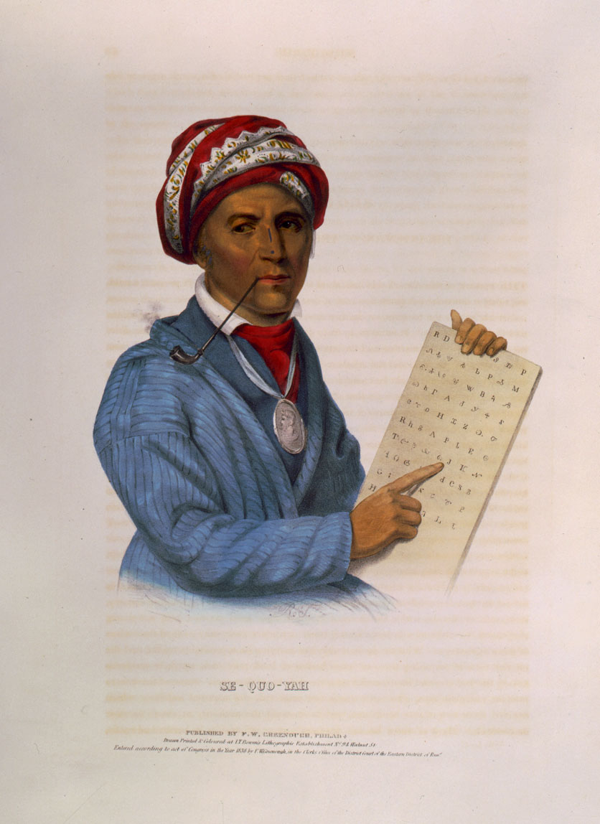Teach This Poem is a weekly series featuring a poem from our online poetry collection, accompanied by interdisciplinary resources and activities designed to help K-12 teachers quickly and easily bring poetry into the classroom.

The following activities and questions are designed to help your students use their noticing skills to move through the poem and develop their thinking about its meaning with confidence, using what they’ve noticed as evidence for their interpretations. Read more about the framework upon which these activities are based.
- Warm-up (quick write pair share): Who are some people that you admire? Why? Make a list and share with a partner.
- Before Reading the Poem (noticing and pair share): Look carefully at the image of the 1838 lithograph of Sequoyah. What do you notice first? Look again by zooming into the image of the lithograph. What do you see now? (Teachers, if you feel like your students need more context before reading the poem, you might want to have your students read the short article that accompanies the image.)
- Reading the Poem: Read the poem “Ode to Sequoyah” by Alexander Posey silently. Notice the words and phrases that jump out at you, then think about what you noticed as you annotate the poem.
- Listening to the Poem (enlist two volunteers to read the poem aloud): Listen as the poem is read aloud twice, and write down any additional words and phrases that stand out to you. Call back the lines that you like by saying these lines aloud with your group.
- Small-group Discussion: Share what you noticed in the poem with your partner and another pair of students. Based on the details you just shared with your small group, how does the speaker seem to feel about Sequoyah? What makes you think this?
- Whole-class Discussion: What do you think is meant by the phrase “The people’s language cannot perish”? Why do you think that Posey wanted to write an ode about Sequoyah?
- Extension for Grades 7-8: Read this biography of Sequoyah and this article about the Cherokee language. Then create a presentation about what you learned or write an ode to a person that you listed at the beginning of class.
- Extension for Grades 9-12: In honor of Native American Heritage Month, read or watch U.S. Poet Laureate Joy Harjo’s lecture “Mapping Indigenous Poetry.” Create a presentation about what you learned or memorize and recite one of the poems mentioned in the lecture.
More Context for Teachers: In her essay “Ancestors: A Mapping of Indigenous Poetry,” Joy Harjo writes, “For indigenous people in this country the English language is a kind of trade language. We are over five hundred federally recognized nations. There are over 220 living indigenous languages. This whole hemisphere is Indian country, from North to South, rich in many cultures, in many languages. English, Spanish, and French allow us to move about and communicate more globally. But it is our tribal languages that allow us to know ourselves intimately.” Read more.
